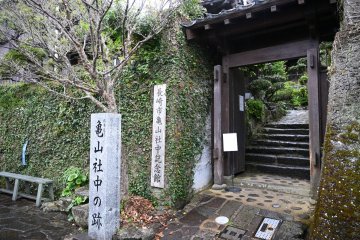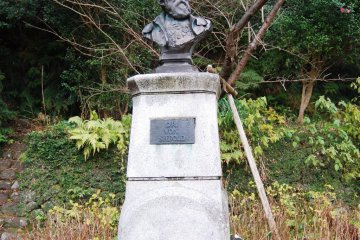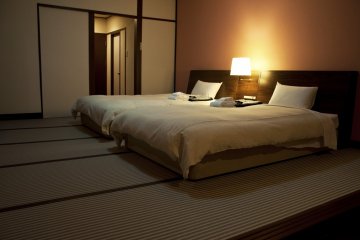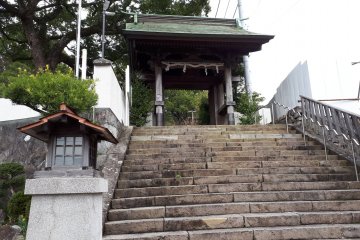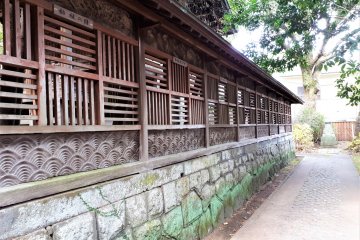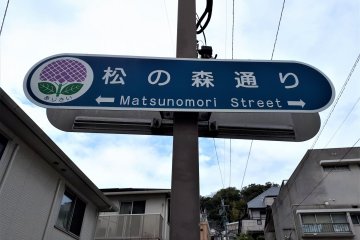I love this place. I really do. I accidentally came across it on the way to Suwa Shrine. A road named Matsu no Mori Dori (Pine Grove Road) cuts the hill and stairway that lead up to that shine, but if you follow the road instead, you find yourself on a very charming paved street dotted with traditionally-styled homes and buildings. And at the end of it, there is the Matsumori Tenmangu Shrine.
The 'tenmangu' designation refers to Sugawara no Michizane, a scholar and poet exiled in the 9th century. Following his death, a series of calamities befell the capital leading those in the court to the conclusion that Sugawara's spirit was angry. To appease him, he was promptly deified and worshipped as the divinity of natural disasters. By the Edo period, though, Sugawara's fame as a scholar saw him become the divinity of learning and scholarship instead.
The shrine compound itself is a series of classic wooden structures, incredibly detailed wood carvings, moss-covered stone and secret-looking pathways - a goldmine of serenity. A camphor tree stands within the compound, its sacred status confirmed with a shimenawa rope wrapped around it.
Established in 1656, the compound sees five smaller shrines on its right with a central main shrine featuring a series of thirty extraordinarily detailed wood-carved frescoes. Many of them still retain some of their original colouring. These carvings can easily occupy a good amount of time if you are so inclined.
One of the more curious features of Matsumori Shrine is the cannon shell at the entrance. A spoil of war, the cannon shell was donated by Terauchi Masatake, a Meiji Period War Minister and the 9th Prime Minister of Japan.
An underrated surprise in Nagasaki, Matsumori Tenmangu Shrine is most definitely worth a visit.



